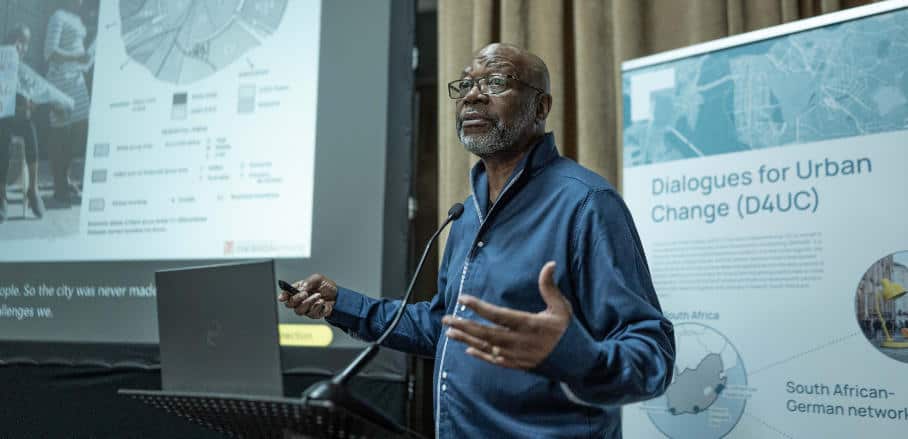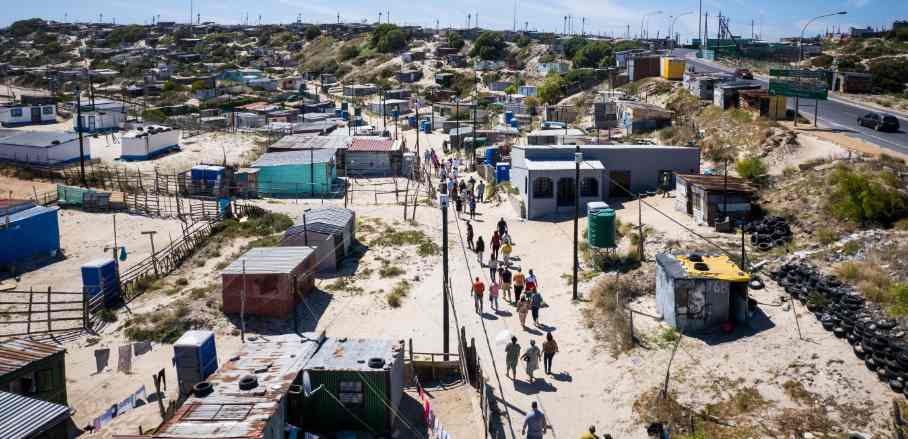Creating Integrated and Safe Neighbourhoods for All Through International Peer Learning Exchange
For years cities have been planned and built for only half the population: Women’s needs are represented sparsely at most. The BMWSB project “Dialogues for Urban Change” implements the approach of international peer learning to create safe public spaces for everyone.
The design of a public space can either improve or interfere with usage, appropriation, and safety for vulnerable groups. The World Bank states: “With women occupying just 10 per cent of the highest-ranking jobs at the world’s leading architecture firms, cities have historically been planned and designed to reflect traditional gender roles and gendered division of labour. As a result, cities work better for men than they do for women.”
The Need for Gender-Transformative Approaches
Hence, inclusive development, access, and usage of public space require a focus on gender-responsive planning. Moving from gender-negative to gender-aware and ultimately to gender-transformative approaches is crucial to strengthen equity and equality within the built environment.
However, this can only be achieved if we collaborate and learn from each other. The GIZ project “Dialogues for Urban Change (D4UC) promotes international peer learning exchanges between South Africa and Germany to work towards safer public spaces for all.

Network participants develop proposals for Stellenbosch’s living lab. © GIZ/D4UC, Stefan Möhl, 2023
The foundation for the transnational learning experiences constitute specifically selected projects of a city, the so-called living labs. These are tangible projects at the neighbourhood level contributing to liveable, safe neighbourhoods and quality public spaces especially focusing on equitable access and use as well as social cohesion and citizen safety by keeping in mind vulnerable groups such as women, children, and the LGBTQIA+ community. The implementation of these living labs is supported by the peers within the network. Twice a year, the participants meet alternately in Germany and South Africa, because – as a participant stated – “nothing can beat personal interaction and exchange – ‘swarm intelligence’ really works!”
Changing Perspectives Through International Peer Learning
Each city got the chance to present recent updates on its living labs. Supported by short videos, the participants brought real-life impressions to their colleagues. Since “one can learn as much from failure as from success stories”, the teams did not only present their achievements but also focused on sharing challenging issues, which resulted in lively and supportive discussions.
Site visits and case study examples were core components of the network meeting. Participants got to know insights from architecture and urban planning “from below” and projects that showed successful approaches to co-creating safe and sustainable neighbourhoods. It became clear once more that “as practitioners, we must co-create with the community to ensure ownership of a project.”
Learning Example: Thubelitsha Park in Kayamandi
One of the South African living labs, Stellenbosch’s Thubelitsha Park, is a public space located in the Kayamandi township. Since especially in a South African context crime rates and violence in public spaces are extremely high, urban practitioners must reduce the opportunity for violence, such as sexual harassment against women, by changing the physical environment. Through a holistic approach including stakeholder engagement and a participatory process, short- and long-term goals had been commonly identified.
Short-term goals, for instance, are the installation of play and gym equipment, and furniture, planting grass and trees as well as the establishment of a so-called neighbourhood watch: In particular women and youth will play a crucial role as “eyes and ears” for safe spaces in the area. Implementing this programme is the first step towards fostering both safety and inclusion.
Furthermore, mid-term and long-term project goals are the set-up of a mobile library and continued collaboration with various existing stakeholders in Kayamandi to tackle safety issues that affect the community, for example through awareness sessions on topics such as crime, drug abuse and teenage pregnancy. The community is excited about the living lab project, in particular, to collaborate with the municipality and its partners to ensure the realisation and success of these interventions.
Collective Idea Generation Solutions
Within the collegial advice on Stellenbosch’s living lab, the peers prepared a range of proposals for the preparation, participatory process, implementation, and monitoring of the living lab taking into account current challenges and framework conditions in Kayamandi in a so-called friendly competition. This means that several teams worked ‘competitively’ on the same question. The group then selected the overall most inspiring approach.

External input by Luyanda Mpahlwa (African Centre for Cities / DesignSpaceAfrica) on “Lessons from Architecture and Urban Planning from Below” © GIZ/D4UC, Stefan Möhl, 2023
All in all, both city and national partners highly appreciate the improvement of relationships and engagement with national government partners as well as partnering on other processes outside the living labs. The multi-level peer-to-peer learning approach creates an impact not only on the individual, project implementation, and city level but also on the national level: feedback loops and open engagement with city practitioners enhance national urban policy and programme fit. Moreover, it impacts multi-level governance since horizontal and vertical exchange builds trust and supports as well as initiates exchange at eye level. Finally, the exchange contributes to jointly sharing challenges for collective idea generation solutions.
Integrated and participatory urban planning can fight intersectional systems of oppression. Hence, strengthening approaches and instruments for integrated urban development needs to be a key goal to create safe public spaces for the common good.
